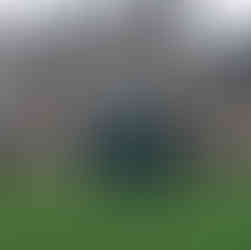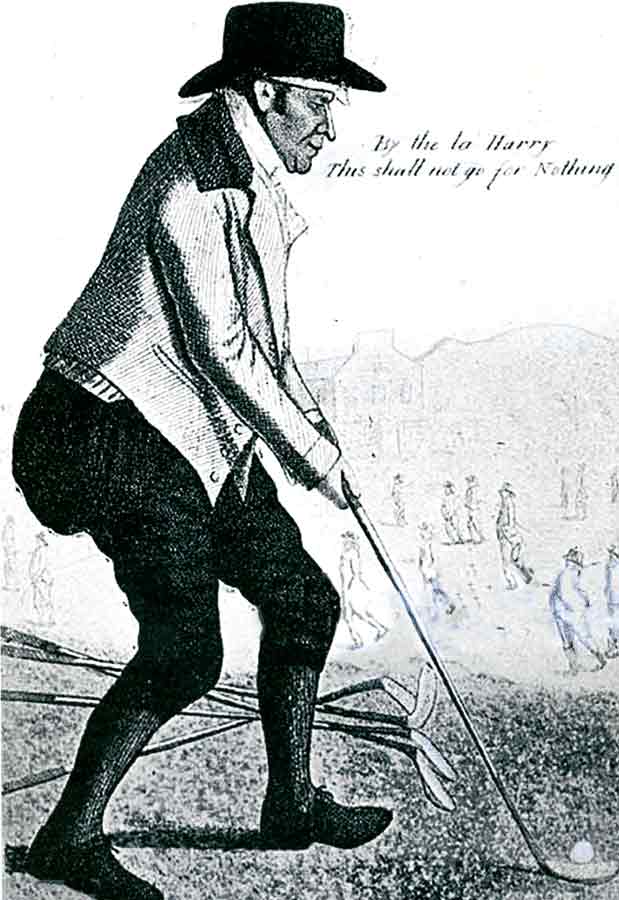Alexander Mckellar, the first documented golf maniac, and his long-suffering wife
- Bill Knowles
- Jan 13, 2022
- 4 min read
Updated: Sep 19, 2023
Cock of the green-1800
Well documented in golfing history, captured by an established artist of the time, and resulted in one of the most famous golf etchings ever printed.

McKellar
Buy Now
The man

The most enthusiastic player in Edinburgh in 1800. Alexander Mckellar took the game up late in life and according to accounts was not a very good player. Undaunted by his poor results he just worked unceasingly on his poor swing, trying to find the secret. He was known to practice in the dark by candlelight, come rain, wind, or even snow (one story says he painted his feathery balls red in the winter).
The film portrays an interpretation of the type of swing McKellar would have made. Assuming the setup John Kay etched, the type of equipment he was using, and a couple of comments from the past records and the movement almost evolves by itself.
The Artist

John Kay 1742-1826
A Scottish caricaturist and engraver Kay started his working life as a barber who was apprenticed for six years. Kay then found work in Edinburgh where he was given the freedom of the city after the qualifying acceptance by the corporation of barber-surgeons.
As an artist, he published his first works around 1780 becoming famous for his miniatures and caricature etchings. From there he continued to flourish and would publish many of his sketches in books. He focused on local celebrities and oddities of which much material abounded in that period of Edinburgh society.
The place

Bruntsfield
Like the other local golfing area of Leith, Bruntsfield dates back to the earliest times in golfing history.
Situated about a mile away from the South of Edinburgh castle its lands are first mentioned ("Brounysfelde" or Browns field) in a charter issued in the late 14th century.
The story

When John Kay, a well-known caricature artist, was given the commission to draw a fanatical golfer who lived only for golf, he became fascinated (The commission came from the famous clubmaker Peter Mckewan). Such material makes not only a good drawing but also creates public interest.
He took it upon himself to travel to the famous Bruntsfield playing field where McKellar lived his intensive life, and see if the man was worth a sketch.
The stories of Alexander McKellar were many. The most famous one was from an episode involving his ongoing marital battles. Mrs. Mckellar's dislike of the game was well known, especially amongst the regular friends and customers of her husband who would frequent the Tavern. Her anger with his passionate emotions for the "lousy" game brought the two into many stressful moments.

On suffering another absent spouse evening Mrs. Mckellar took it upon herself to try and humiliate him into forgiveness.
Preparing the ungrateful swine's evening supper she decided to carry it to him complete with bedside cap a distance of a fifth of a mile, while he was still engrossed in another unforgettable golfing session.
On reaching her prey she stopped within close proximity and stood like a statue quietly awaiting his avalanche of apologies. Unfortunately, the ploy didn`t work as he sharply demanded she steps back two paces and put the food on the floor for later consumption while he continued to work on keeping his head still.

Another of the amusing Mckellar stories was he would say "by the Larry, this one shall not go for nothing."
AFTER EVERY SHOT!
a wonderful self-coaching method that may have helped him to focus.
We are all left to wonder who or what "La Harry" might have been.

John Kay's famous art shop on the Royal Mile, where he showed and sold his etchings was destroyed during the Great Edinburgh Fire of November 1824.
Today















Comments